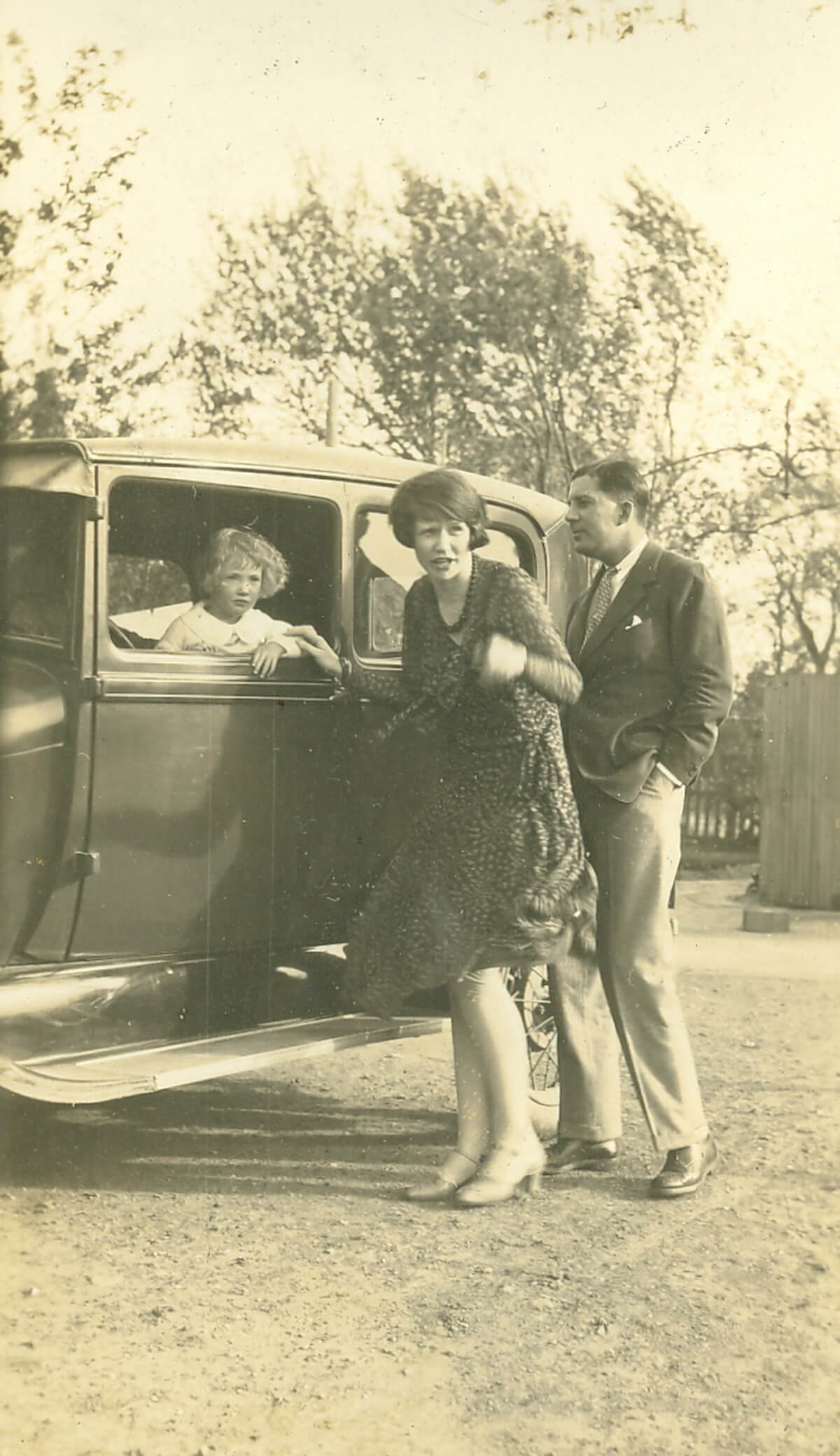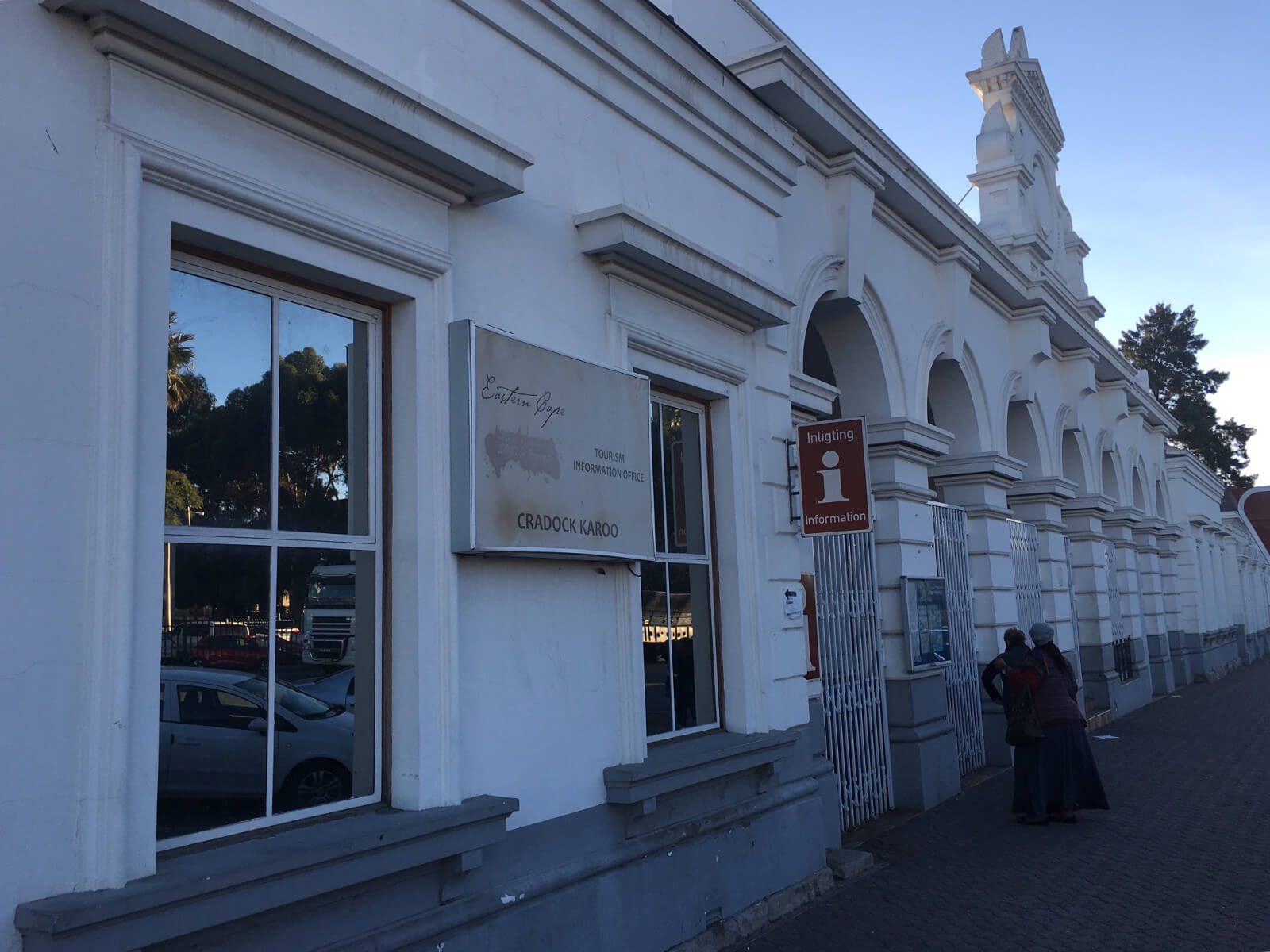I have written before how I had discovered that my great grandfather, Leonard Newmarch, a young engineer from Yorkshire, had in 1893 been sent to South Africa to build a railway, and in the town of Cradock amid the Karoo Mountains in the Eastern Cape, met his wife to be, Sadie Biddulph, a descendant of settlers from Worcestershire who had come to Africa in 1820; and how subsequently after years of work on the railways in North China he and Sadie had retired back to Cradock, to live in a grand house and palm tree-ed garden, not far from St Peter’s Anglican Church, at 6 Commissioner Rd, which they now filled with antique Chinese furniture and porcelain.
In 1946 they were joined by their son, my maternal grandfather, Guy, who like his father, had been a railway engineer in China.
After spending the war years in an internment camp in Hong Kong, he had returned to London to find his marriage broken. There was a divorce, and, to her sorrow, he dropped out of my mother, Anne’s life. The last message she received congratulated her on my birth in 1953. After that he was never heard from again.
My father and mother tried very hard to locate him, using every resource available. What puzzles me is that they did not seem to know about the South African connection or wonder whether he may have gone to his parents. It was not until 1964 that my mother received the sad news from a complete stranger that he had passed away. I found the letter in her effects after her death in 1991. It was from a Mr P S Coetzee, a senior resident of Cradock, who wrote:
“Dear Mrs Williams,
I do hope I am correct in my surmise that you are the daughter of Mr Guy Newmarch, as I recollect that you were married to a Mr Williams. Actually I only know you as Anne, the old man’s small daughter of whom he never stopped talking during all the years of our friendship.
To you I am a total stranger but after you have read this letter, which I hope will find its way to you, you will understand.
In this letter I bring to you the sad news that your father, Guy Newmarch, died at Cradock in the Provincial Hospital at 11.45 am on 24th April 1964.
Your father was my dear friend for the last 16 years and during the last couple of years, when things did not go well with him, I endeavoured to be a true friend to him and assisted him where possible. He was ill in Hospital since the 11th December, 1963, and was steadily going down in health. I made arrangements for his funeral from St. Peter’s Anglican Church and he was buried on Saturday, the 25th instant, near the graves of your grandfather and grandmother in the Cradock graveyard.
To you I may say that he spent a life in Cradock and is known as an old gentleman and he died a real gentleman. Apparently you two have not been corresponding in the latter years because I found it impossible to obtain any correspondence amongst his few belongings. Some local lawyers provided me with this address however, as the one which was used to contact your Mother during the divorce proceedings.
You may also carry this news to your Mother where ever she may be, and you can assure her, from a very close friend, that Guy never stopped loving her until the day of his death…
…I remain
Yours faithfully
P S Coetzee”
One can only imagine what my mother must have felt on receiving this. She never ever mentioned it to me, or raised the subject of her father again.
It was years later that I learned the full sad story from Mr Coetzee’s son Philip, who wrote to me out of the blue after finding my website.
Guy, probably still in shock after his wartime experiences, had lived quietly with Leonard and Sadie until their deaths in 1953. After that he had to find work, and was employed as a draughtsman at the Cradock City Hall – a humble job for a senior engineer who had once designed and built bridges all over North China. At some point he had to give up his job. Life was hard after that. He had sold off the furniture and antiques in the family home to get by. There came a time when he had to sell the house itself. At first he moved into the relatively comfortable
Victoria Hotel (there is coincidentally a fine collection of Chinese blue and white porcelain in its lobby today, and one wonders about its provenance). Later he had to find poorer lodgings, where he remained, living with his beloved dog, in penury until his final illness.
I am grateful, on behalf of all my family, for the kindness of his friends, the Coetzees and the Moolmans, who looked after him until the end.
I have kept in touch with Philip, who has sent me, over the years, photos and memorabilia of the Newmarch family that Guy had entrusted to his parents for safekeeping. Particularly touching were Guy’s last remaining possessions: medals that his father had been given by the Chinese Government for his work on the railroads, his draughtsman’s kit, and five books, inscribed by his mother and his wife. These now stand on a shelf in my home in China. They were everything he owned.
It seemed to me that more than enough time had been allowed to go by without paying tribute to this brave, honourable member of our family –my grandfather – who had borne ill fortune with grace, who had lived and died, in P S Coetzee’s words, “a real gentleman” and who had loved us, though unacknowledged and far away.
Philip had written for us a superb guide to Cradock and directed us to all the places connected with the Newmarches that we should visit. After saying farewell to the Newmarches in Durban, Hong Ying, Sybil and I flew to Port Elizabeth, then drove north, through the Karoo Mountains, to Cradock.
We found that we could find shadows of Guy’s past – the high street, the churches, city hall, the office where he worked, the site of his old home (though the house and palm trees are long gone and it is now a garage), the Victoria Hotel …
Sadly there was little tangible to indicate that the Newmarches, or the Biddulphs for that matter, had once lived in any of these places.
Saddest of all, however, was that we were not able to find any of the family graves – although we did search in the beautiful Town Cemetery, on the banks of the Big Fish River, with a view of the hills.
Unfortunately, the Big Fish River washed over its banks in 1974 creating an enormous flood that inundated the graveyard and washed many gravestones and bodies away.
It seems that Leonard and Sadie and their son Guy are no longer there – at any rate in any recordable or physical form.
Yet memory, and imagination is strong, and so is love. Invisible though they were, we felt their presence. I think we did achieve a sense of closure, a conclusion to my parents’ search, and maybe the ending of a neglected chapter.
We left moved, feeling if nothing else that Leonard, Sadie and Guy have returned to the family fold. We now know how to remember them.
(Note: full documents related to William John Sawdon Newmarch and Mary Margaret Newmarch will be posted in a later blog post)

















